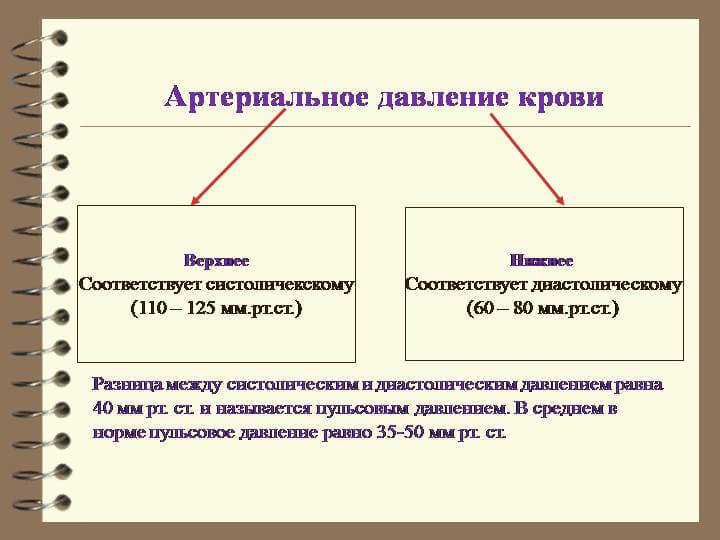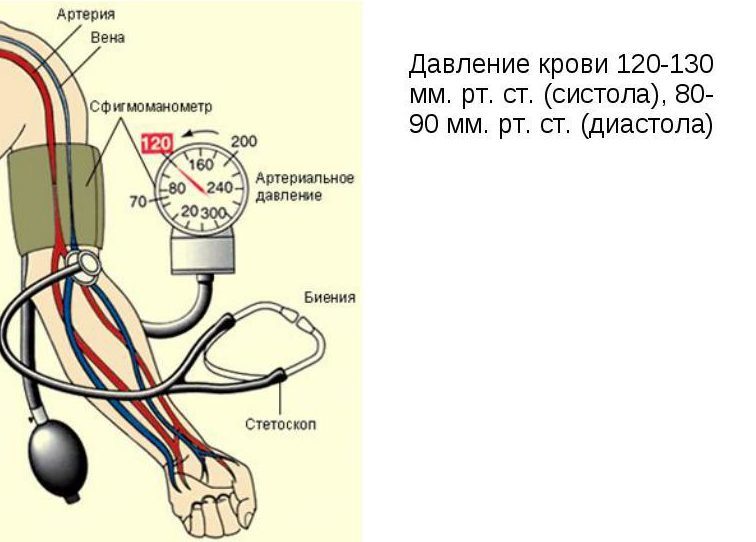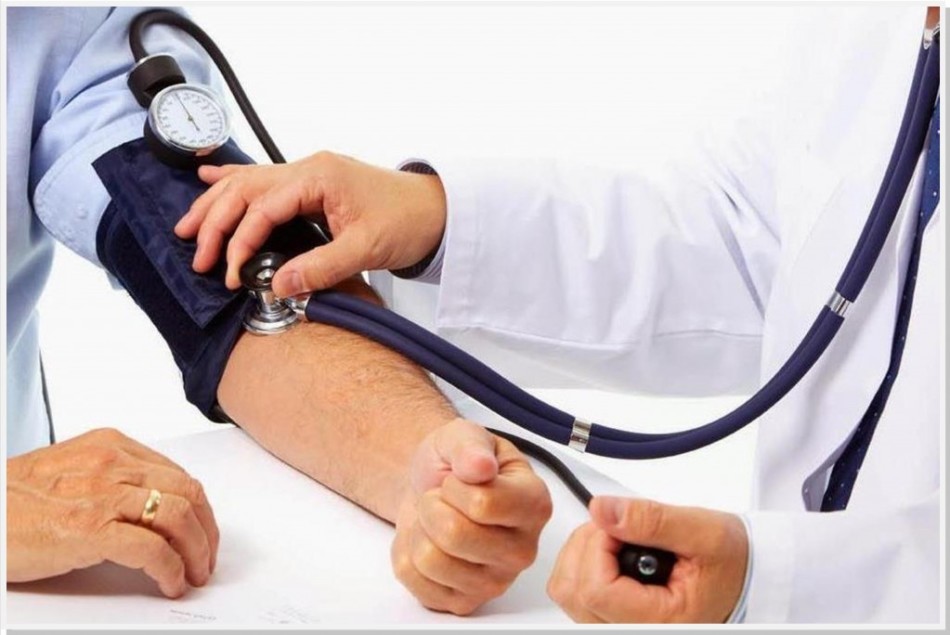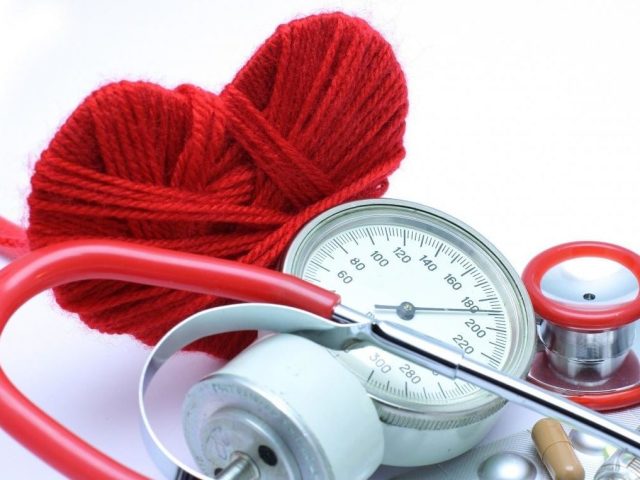The article tells what the systolic indicator of pressure means? You will learn what norms of this value and how to treat hypertension and hypotension.
Content
- Sistolic blood pressure: this is the lower or upper - what does the upper, lower hell shows?
- Systolic blood pressure: what does it depend on?
- The difference between systolic (upper) pressure and lower?
- Systolic blood pressure: Causes of decrease in blood pressure
- Systolic blood pressure: what does a high blood pressure indicator mean?
- Video: What does systolic pressure mean?
To find out what pressure, it is necessary to determine the coefficient of the effect of blood supply to the walls of the vessels. Tonometer measure two indicators - upper, lower. One of the measurements is systolicanother - diastolic pressure. The first value indicates how capable contracts the heart muscle. This value is influenced by the work of arteries. Thanks to them, pathogenic effects on internal organs and tissues are not allowed.
When the heart is compressed, the valve of the aorta itself has the ability to close. Blood flow from blood vessels stops for a while. The blood from the lungs begins to flow during this period, it is saturated with oxygen. Two streams are mixed in the heart chamber, reduction occurs again, blood supply moves further. Blood flows through the vessels through all systems of the body. Strength, what promotes the movement of blood flow And there is diastolic value. Further in detail we will study what systolic dimension of blood pressure is.
Sistolic blood pressure: this is the lower or upper - what does the upper, lower hell shows?
If the upper limit is not normal, then this can turn into dangerous consequences. Systolic pressure plays an important role in human life. The diastolic has the ability to increase only in some cases and most often this occurs after the upper blood pressure has increased. Stably increased upper and lower pressure is characteristic of hypertensive patients.

When blood pressure is not normal, the patient’s performance, complexion of the face, and endurance indications may change. Still, due to disorders of the heart, blood vessels, human life is significantly reduced. In order for systolic blood pressure to be normal, you should lead a healthy lifestyle, have good genetic data, eat right.
When taking a medical examination, the first thing doctors do is measure blood pressure in patients. When the readings on the tonometer are displayed, then this measure means general pressure in all arteries. But in fact, the parameters of the power impact on the vessels can vary, the closer the arteries to the heart, the greater the pressure force in the vessel.
When measuring blood pressure indicators with a tonometer, you will find out what values \u200b\u200bof force are precisely in the shoulder artery. For all medical standards, it should be 120 by 80. As mentioned earlier, The first coefficient is systolic, the second is diastolic.
These numerical values \u200b\u200bmay vary, in one person, the systolic dimension is considered normal from 98, in the other 130. If the person is up to 25 years, then systolic, diastolic pressure can be lower than the normative data.
If there are increased results of blood pressure, then, most likely, the patient develops hypertension. And the reduced value of indicators is a consequence of hypotension.
Systolic blood pressure: what does it depend on?
The systolic coefficient characterizes the effect of blood supply on the walls of blood systems at a time when myocardial contractions begin. When the upper measurement is normal, it can vary from 98 to 125 millimeters.

Such factors can affect numerical values \u200b\u200bof blood pressure:
- The power effect with which the muscles of the heart can be reduced.
- The state of the vessels themselves, the elasticity of their walls, tone.
- The number of myocardial contractions in one minute.
These measurements largely depend on hereditary factors, the presence of pathologies, which affect the development of cardiac, vascular diseases.
The difference between systolic (upper) pressure and lower?
The upper result of the measurement of blood pressure is systolic pressure. It indicates the force of exposure to the walls of blood systems of blood supply at the moment when the heart is reduced. The upper measurements are called - heart pressure, although it is a controversial statement.
The lower blood pressure coefficient is diastolic pressure. It is recognized at the moment when the muscles of the heart relax. Thanks to this indicator, you can determine what condition the vessel wall, the degree of their conquering.
The upper and lower dimensions of blood pressure can vary by thirty-seconds of mm of an eg of an eg. Elderly patients, as a rule, have increased pressure with age.

IMPORTANT: If in a person in control measurements the upper pressure has a result of more than 140-150 millimeters of the RT. Art., then you should consult a doctor for preventive therapy in order to normalize the condition. A high systolic blood pressure coefficient can become the root cause of a stroke, heart attack, etc. The second blood pressure coefficient indicates the presence of problems with the vascular system, kidneys.
Systolic blood pressure: Causes of decrease in blood pressure
Symptoms reduced blood pressure There are such signs:
- Sleep state, weakness, lethargy, dizziness.
- The manifestation of apathy, increased sweating, migraines, inability to concentrate.
- Depressive states, irritability, forgetfulness, in difficult cases - loss of consciousness.
- With sharp turns of the head, change of body positions, the patient may experience loss of orientation, dizziness.
Hypotonics is also inherent at night insomnia, and in the afternoon, on the contrary, drowsiness, distraction, fatigue and malaise. When a person with such a diagnosis is in a cramped stuffy room, he can lose consciousness, experience strong weakness.
Sources of a reduced systolic blood pressure coefficient are:
- Ailments of the endocrine system (diabetes, vascular pathologies), bradycardia, heart valve activity.
- Physical overwork, stress, nervousness, pregnancy.
- Disorders in the work of brain neurons can be due to injury.

- Regular stressful condition, insomnia, poor nutrition, a long duration of the worker, strong fatigue - can adversely affect the functions of the heart muscles. Thanks to these reasons, many can decrease the upper pressure.
- Systolic pressure is often reduced in pregnant women. Because the body of the future mother experiences great restructuring. The cardiovascular system also undergoes changes. That is why the pressure can fall on 10 units in women in an interesting state.
- Persons who work in enterprises with difficult working conditions, and athletes often have hypotension. Large loads contribute to a decrease in heart muscle contractions.
- Such a disease as bradycardia is characterized by a decrease in the number of heart fluctuations, is a consequence of coronary disease, myocardial, atherosclerosis. This disease leads to heart attack, stroke.
- Those patients who suffer from diabetes have an increased density of blood flow. Because of this, a decrease in systolic pressure is developing.
- With some disorders of the heart valve, there is a decrease in the indicator of systolic pressure. Its work is affected by injuries in the thoracic region, diseases such as atherosclerosis, rheumatism.
What is reduced to therapy for the reduced upper blood pressure?
To eliminate problems with a low indicator of systolic pressure, pharmacy products with caffeine are used. These are ranked by citimon, fludocartisone, Nikatamid, Pantocrin and others.
Even specialist doctors can recommend physiotherapy for patients with low blood pressure and enhanced nutrition. To increase the indicator of the systolic blood pressure coefficient, you can eat fatty meat, sweet desserts, coffee, salting. The main thing is not to abuse such products, otherwise hypotension can develop into hypertension.
Systolic blood pressure: what does a high blood pressure indicator mean?
Increased systolic value It may appear as follows symptoms:
- A deterioration in the patient's condition, frequent insomnia at night.
- Patients can feel noise in the ears.
- A strong heartbeat, swelling of the limbs occurs periodically.
- Due to the poor functioning of the heart, blood vessels, the limbs, fingers on the legs on the arms are numb.
Often hypertension is manifested without any symptoms. That is why he is called - a quiet killer. High indicators of the upper value of blood pressure can lead to such dangerous pathologies as a heart attack, a stroke.
How to diagnose hypertension?
In the case when the patient has persistent indicators of high systolic pressure, the doctor will recommend a number of examinations:
- Blood samples (general, biochemical).
- Analyzing the heart muscle using a phonondoscope.
- We'll have to make a cardiogram, echocardiography, vascular dopplerography.
If there are violations in the work of the kidneys, gastrointestinal tract, then you will need to visit doctors of narrow specialties that will give recommendations on further therapy.
The primordials of an increased indicator of systolic blood pressure are:
- Age -related changes, elderly age, heart disease and vascular system.
- Stress states, smoking, consumption of strong drinks.
- Sitting lifestyle, atherosclerosis, obesity.
- Thanks to these reasons, a violation of the heart muscle, and a number of other complications, develops. To improve the condition of the patient, you should begin therapy in the form of taking the necessary drugs that only the attending physician can select. Most often, in such cases, ACE inhibitors (captopril, renitects, bripper), beta-blockers, diuretics, calcium channel blockers, dietary diet are used, are refused addictions, and hiking in the “menu” of the day.
- If you follow all the recommendations of the doctor, then the patient will improve the quality of life and you can achieve a persistent increase in systolic pressure to normative indicators.
- Without fail, it is necessary to limit the consumption of fried, fatty foods, refuse conservation, semi -finished products, strong drinks, coffee, fast food, salty, sweet products.
- It is better to switch to proper nutrition, use kefir, cottage cheese, sour cream, vegetables, low -fat meat, fish (just not fried, but baked or cooked in a slow cooker, double boiler).
- Nutrition plays an important role in the treatment of hypertension. Therefore, the patient should observe the diet constantly if he wants to feel healthy. Otherwise, serious complications may appear.
Also, with abnormal indicators of systolic, diastolic pressure, it is impossible to independently treat with tablets that the doctor did not prescribe to you. Some drugs can even aggravate the state of health, and not become a panacea. Therefore, do not use funds, without the recommendation of a specialist. Be healthy!








Increased pressure is the problem of our family from generation to generation, it seems. I at least somehow manage to hold it, I take the motherwort Forte in the norm (I order a phytomarket in the online store, it comes out cheaper), well, I try not to add weight in weight. Excess weight does not bear anything good. Probably, it is thanks to this that pressure is normal
It is the “heart” pressure of the mother that increases, and with jumps and unevenly, due to impaired heart rhythm. Moksonidin-SZ was prescribed to normalize the rhythm, its frequency, at the same time, the state of blood vessels returned to normal. Thus, the drug normalizes all deviations, including pressure.
Ilona, \u200b\u200bMoksonidin-SZ normalizes both indicators, regardless of the difference in indicators. By improving the work of blood vessels, expanding their lumen and optimization of tone. This is the secret of successful bringing to normal not only pressure, but also the rhythm of the heart.
Actually, Moksonidine-SZ for each day is prescribed for special indications, for example, when, together with hypertension, there is obesity, diabetes, etc. And basically, it is an ambulance with hypertension or simply highly increased pressure.